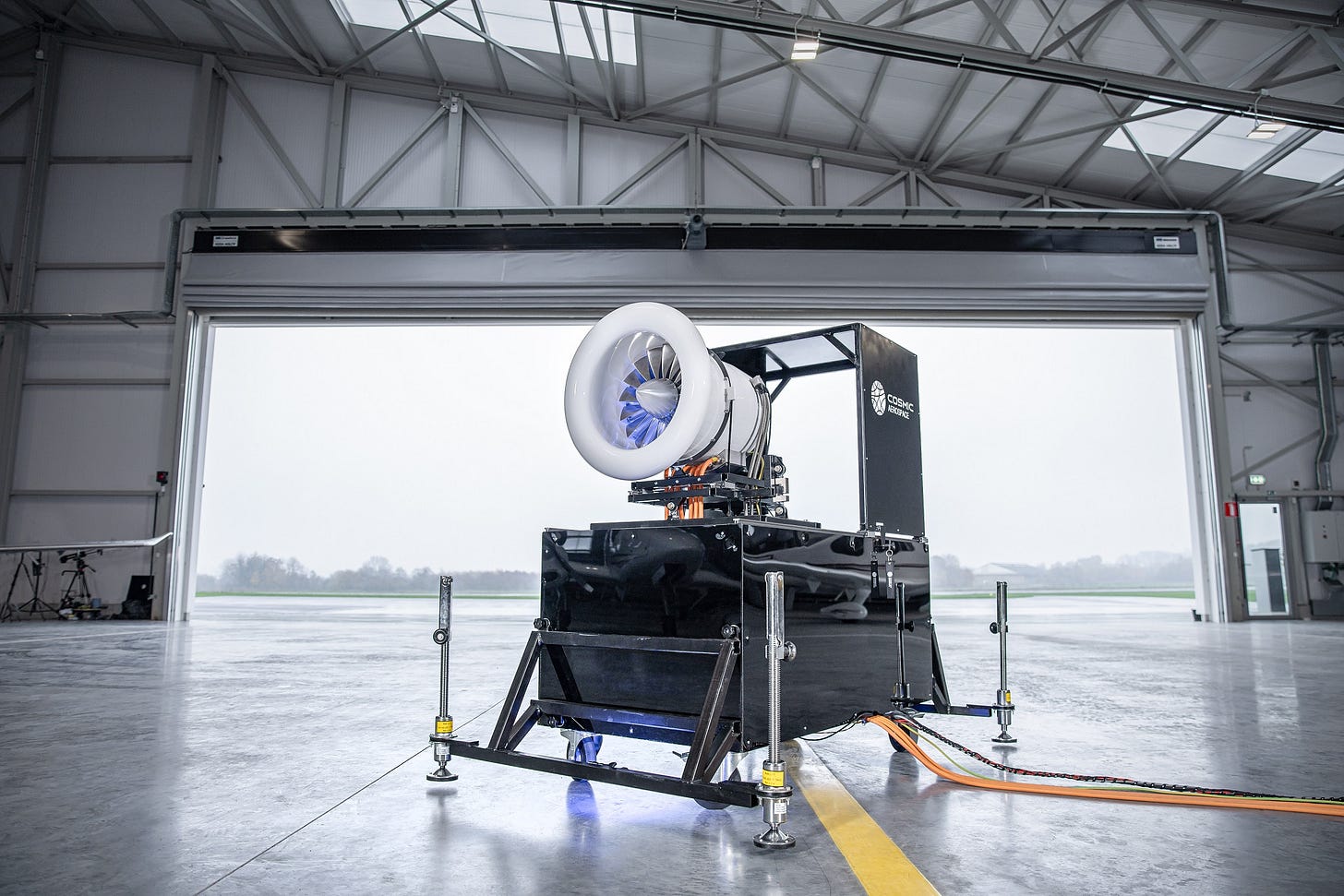Cosmic Aerospace aims to make 1000 km electric flight a reality
25-seat regional aircraft aims to provide true range
An increasing number of companies are trying to build next-generation sustainable aircraft powered by either all-electric, hybrid-electric or hydrogen-electric technologies. The latest entry is Colorado-based startup Cosmic Aerospace, which came out of stealth mode in mid-May 2023.
We spoke to Cosmic's co-founders Christopher Chahine (CEO) and Marshall Gusman (CTO), who walked us through their key differentiator: making 1000 km battery-powered flights a reality this decade.
When we asked what led them to start a new sustainable aircraft company, both Christopher Chahine and Marshall Gusman echoed something we hear a lot from startup founders – that the pace of change is too slow:
Chahine has been an entrepreneur and aeronautics researcher, but was “quite frustrated with the pace of progress in sustainable aviation. That led me to realise that there was a lot that we could do better.”
Gusman had previously been one of the earliest employees at Boom Supersonic, which is trying to build a new supersonic aircraft that will also be sustainable.
However, Boom’s sustainability play rests on powering the aircraft with Sustainable Aviation Fuel (SAF), and he felt he could make more of an impact in electric aviation, which would serve as a better legacy for his work:
“So, I was really thrilled to connect with Christopher. His vision for what we could do with electric aviation is very much in line with what I wanted to do. And this project that we've got is needed by the world and it’s going to be a really good addition to the aviation space.”
A cosmic leap in range
Cosmic Aerospace’s first aircraft, the Skylark, is scheduled to come into service in 2028. It will carry 25 passengers.
Chahine emphasises that “the value proposition of an aircraft is to travel long distances in a short amount of time.”
However, “one of the big problems with electric aircraft is range. We’re really addressing that head on. We want to build an electric aircraft that can travel with real flight ranges.”
A map on the Cosmic Aerospace website shows the types of routes where it will be able to service with a 1000 km range. For example, from Brussels, the Skylark will be able to cover most of Western and Central Europe.
Gusman says that initially the company will look for existing regional jet and turboprop routes to be replaced with the Skylark. But there are opportunities beyond that as well:
“I think there's some really exciting things that can happen with the advantages of electric aviation. From a cost perspective, noise perspective, emissions, all of these things will allow us to operate in smaller areas.”
In terms of operating costs, Chahine estimated that Skylark would offer a reduction of 50% measured against comparable kerosene-powered regional aircraft, “which is a big deal.”
Skylark will work with existing battery technology
A key question is how Skylark can fly 1000 km, given the weight and energy density issues around batteries.
Marshall Gusman says that to address this, the Cosmic Aerospace team has been working with “propulsion, aerodynamics and structural weight in a way that reaches extremely high efficiencies.”
In fact, Gusman believes that the next generation of batteries in development will be enough to power the Skylark.
For example, in a recent Allplane podcast interview, Richard Wang, CEO of advanced lithium metal battery developer Cuberg, said that the company was developing a battery offering highly improved energy density at 400+ wh/kg, while Chinese manufacturer CATL says it has gone even further in building one with an energy density of 500 wh/kg.
Gusman says that “those will be sufficient for our mission.”
A key milestone was passed in March 2023, when Cosmic reached a critical power density threshold with the first engine prototype at its test facility in Limburg Regional Airport in Belgium.
Bridging the funding gap
It is generally believed that it takes about $1 billion to see an aircraft through from design to development to certification to production — largely because this process takes years, during which the company burns cash but doesn’t have a product to sell.
At last year’s Archer Aviation Open House, Archer CEO Adam Goldstein said that this was the single biggest barrier to aviation startups making it through to commercial flight.
Cosmic Aerospace has initial funding from the Swedish VC fund Pale Blue Dot, but it will need a lot more as it builds its aircraft.
CEO Christopher Chahine admits that the capital requirements are large. For Cosmic, it is more likely to be in the region of the hundreds of millions rather than $1 billion. This is because, unlike Archer (which is developing an eVTOL), Cosmic is building a conventional aircraft.
Chahine is confident that investment will come once Cosmic has proven the value proposition:
“We're addressing a pretty big market with the range that we're covering. Once we demonstrate that we can get to the performance steps that we're targeting, it's going to be easier to justify that we need some larger capital requirements to get this aircraft to market.”
For Cosmic, their first engine prototype should pave the way for a future in which more generous funding comes their way, clearing any final hurdles to making medium-range electric flights a reality in the next 5 years.





